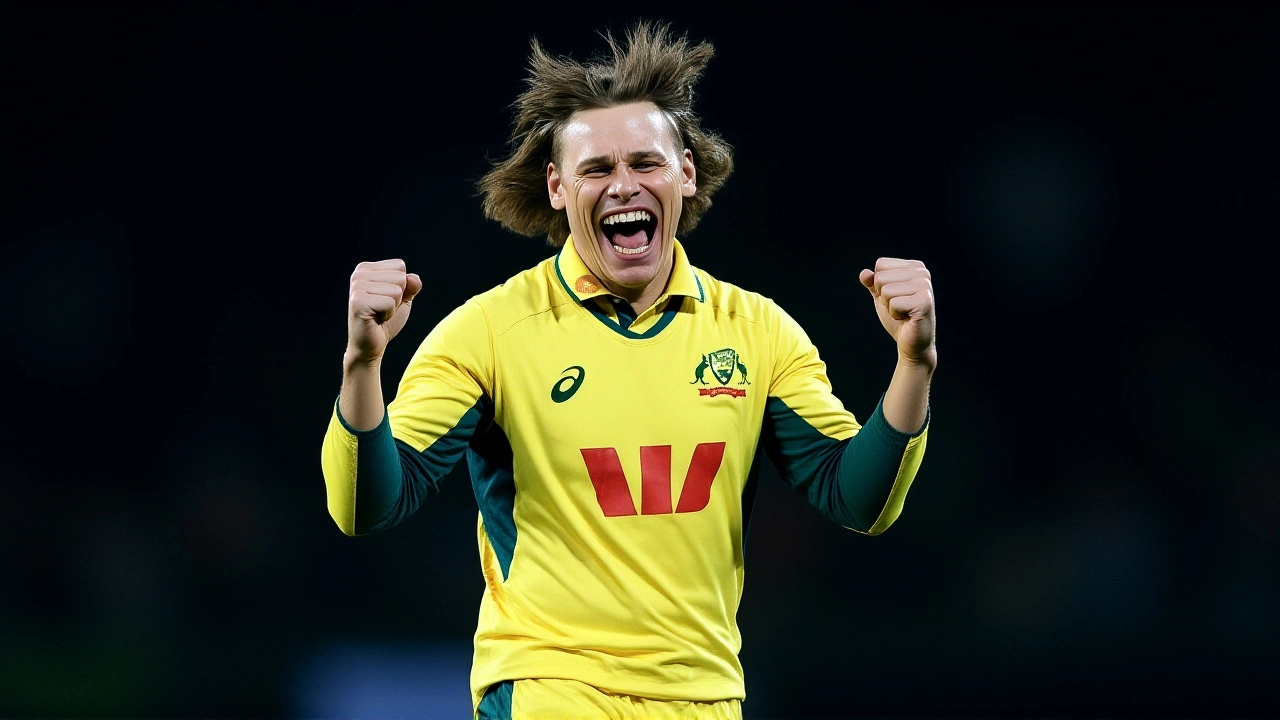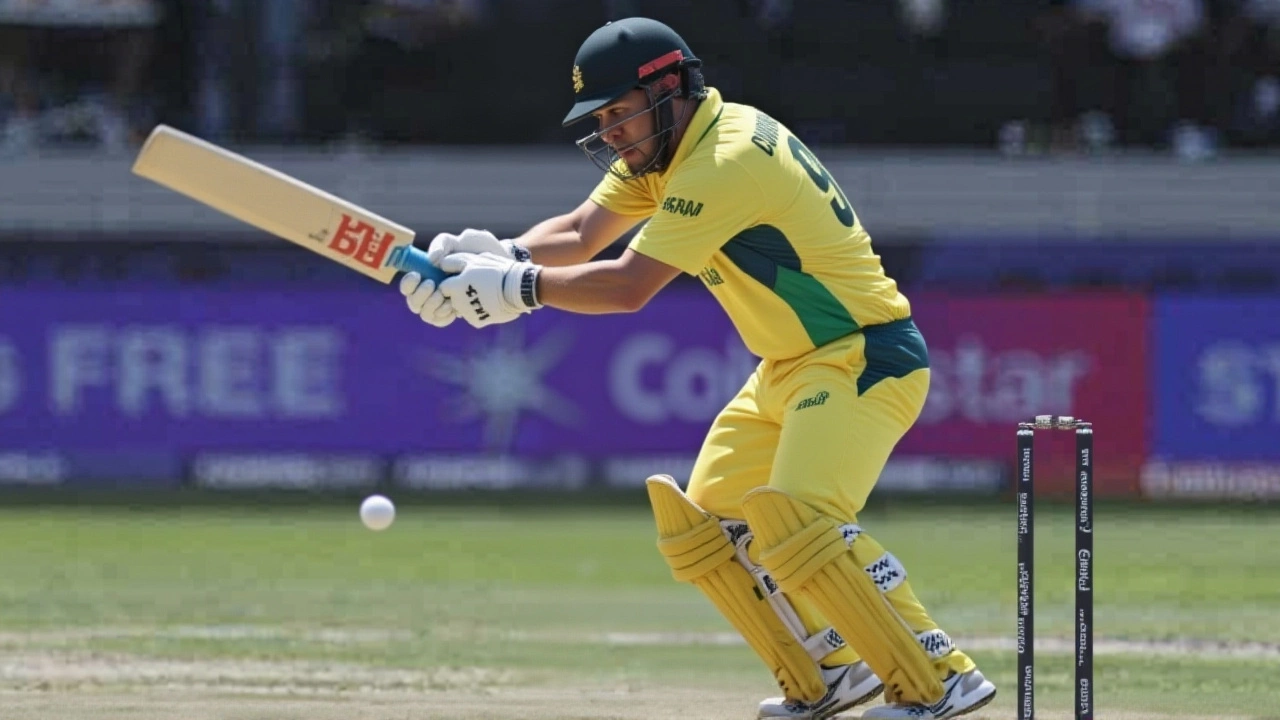When Mohammed Shami, fast bowler for India, unleashed a ruthless spell against 21‑year‑old debutant Cooper Connolly, opener for Australia, the drama unfolded at the Dubai International Cricket Stadium during the ICC Champions Trophy 2025 semi‑finalDubai. The Indian captain Rohit Sharma, captain of India, and Australian skipper Steve Smith, captain of Australia, could not have predicted the early collapse that left the visitors 4/1 after three overs.
Background to the Semi‑Final
The International Cricket Council had scheduled the semi‑final for 7:00 PM GST on 4 March 2025, hoping the slow‑pitch conditions at the Dubai venue would reward patience rather than raw pace. India entered the match riding a wave of confidence, having claimed 17 wickets in just nine games, while Australia were nursing a late‑stage injury to regular opener Matthew Short, batsman (Australia), who slipped on a hamstring on 28 February 2025.
Coach John Buchanan (not to be confused with the former Australian coach) urged the replacement, Connolly, to exploit the field‑restriction overs. The plan was simple: get him off the mark and let the middle order, anchored by veteran Travis Head, build a platform.
Shami's Spell and Connolly's Duck
From the moment Shami thundered in from around the wicket in the third over, the narrative shifted. Hawk‑Eye data showed him consistently pitching the ball at the off‑stump line, clocking an average speed of 142.3 km/h. In a blistering sequence of seven deliveries, the Australian youngster missed the bat entirely – the bowler was simply too quick for Connolly’s tentative footwork.
On the ninth ball, UltraEdge detected a faint but decisive edge at 0.89 ms after release. Umpire Richard Illingworth, the experienced English official with more than 100 ODI appointments, initially hesitated, prompting India’s skipper to demand a review. The replay left no doubt: Connolly was out for a duck, having faced nine deliveries without a run.
"He was swiping away, square on the off‑side," former Australian keeper Ian Healy ranted on SEN Radio. "His footwork was absent, his head was watching the gap, not the ball. In those conditions you have to work the ball around, not swing for the fences."
Reactions from the Cricketing Community
Connolly, still reeling, addressed reporters on 6 March 2025 ahead of Western Australia’s Sheffield Shield clash at the WACA. "As a kid you always want to represent your country," he said, "and walking out in a semi‑final was unbelievable. Mohammed Shami is world‑class for a reason – I learned a lot today."
India’s camp, meanwhile, praised the execution. "Shami showed why he’s a strike‑bowler in big games," analyst Sunil Gavaskar noted, referencing the bowler’s tournament‑best 17 wickets.
Australian coach Justin Langer (formerly head coach of Western Australia) admitted the team had mis‑read the pitch. "We expected a bit more bounce. The slow surface demanded patience, not aggression. Connolly’s approach was too open‑handed for what the wicket offered."
Impact on Australia's Knockout Record
The loss snapped a 14‑year streak of knockout‑stage victories that dated back to the 2011 World Cup final on 2 April 2011. It was also the first time since the 2003 World Cup that Australia bowed out in a Champions Trophy semi‑final, a tournament the nation had never failed to reach the final before.
Statistically, Australia’s ODI knockout win‑percentage fell from 78 % to 71 % after the defeat. The setback also meant the Baggy Green‑clad side would miss out on a potential back‑to‑back Champions Trophy titles, a feat only achieved by India in 2013‑2017.

Looking Ahead: What This Means for Both Teams
India now prepares for the final against a yet‑to‑be‑determined opponent, likely relying on Shami’s early breakthroughs to set the tone. For Australia, the focus shifts to rebuilding confidence ahead of the upcoming Ashes series. Connolly, despite his early dismissal, redeemed himself in the 24th over by taking Rohit Sharma’s wicket – a small silver lining that could boost his selection chances for future ODIs.
Cricket Australia’s selection panel will review the debutant’s performance, weighing his raw talent against the harsh lesson learned on a slow Dubai surface. Meanwhile, the BCCI (Board of Control for Cricket in India) is expected to keep Shami in the lead‑bowling role, given his 17‑wicket haul and his ability to swing the ball under pressure.
Key Facts
- Event: ICC Champions Trophy 2025 semi‑final (4 Mar 2025)
- Venue: Dubai International Cricket Stadium, Dubai, UAE
- Result: India won by six wickets; Australia dismissed for 166
- Top bowler: Mohammed Shami – 3 wickets for 22 runs
- Debutant dismissed: Cooper Connolly – 0 runs (9 balls)
Frequently Asked Questions
How does Connolly’s duck affect his future in the Australian ODI squad?
Selectors will likely view the duck as a learning experience rather than a career‑ending mistake. His later wicket of Rohit Sharma shows he can contribute with the ball, and his domestic form for Western Australia remains strong, keeping him in contention for upcoming series.
What made Shami’s spell so effective on a slow Dubai pitch?
Shami combined a crisp off‑pace with precise line, targeting the off‑stump and exploiting the limited bounce. His ability to swing the ball late, even on a low‑pace surface, forced Connolly into a series of tentative strokes that never found the sweet spot.
Why did Australia’s knockout streak end after 14 years?
The early loss of an opener on a difficult pitch set the tone. Coupled with a mis‑reading of conditions and an aggressive opening strategy, Australia couldn’t recover, allowing India to seize control early and never look back.
What does this victory mean for India’s chances in the final?
The win underlines India’s depth in fast‑bowling, a factor that has often been a weakness. Going into the final, they carry confidence that their bowlers can strike early, which should serve them well against any opponent.
How did the slow pitch influence the overall scoring pattern?
Runs came mainly from the middle order, with Head and a late‑coming David Warner (who scored 45) consolidating after the early wickets. The lower strike‑rate reflected batters’ need to rotate the strike and wait for the ball to reach the slower end.

Written by Kendrick O'Sullivan
View all posts by: Kendrick O'Sullivan